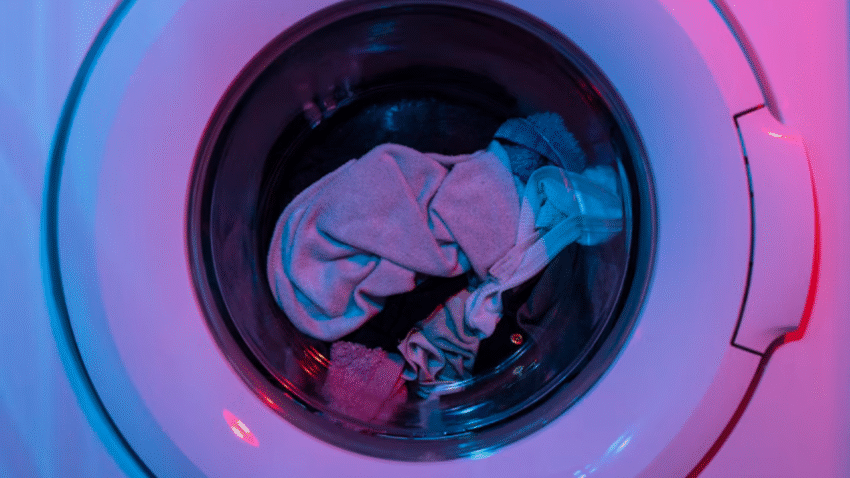Introduction
If you’ve ever struggled to fold laundry on a bed, countertop, or the top of your dryer, you know how much easier the task would be with a dedicated space. A laundry folding table can make the process faster, more comfortable, and more organized. Better yet, you can save money and customize the design to your space by making it yourself. In this guide, you’ll learn how to build a DIY laundry folding table step-by-step — no advanced carpentry skills required.
Why a Laundry Folding Table Matters for Your Laundry Room
Having a folding table in your laundry room offers practical and organizational benefits:
- Speeds up folding time by providing a dedicated surface.
- Keeps clothes neat and wrinkle-free immediately after drying.
- Maximizes laundry room efficiency with built-in storage options.
- Improves comfort by giving you a workspace at the right height, reducing bending and strain.
- Adds value to your home by making the laundry space more functional and appealing.
With a DIY approach, you can tailor the table’s size, height, and features to your exact needs.
Step-by-Step Guide to Building a DIY Laundry Folding Table
Step 1: Choose the Table Design
Decide on the style that suits your laundry space:
- Freestanding Table: Simple to build and move around.
- Over-the-Appliance Table: Fits over your washer and dryer to save floor space.
- Wall-Mounted Folding Table: Folds up when not in use, perfect for small laundry rooms.
Step 2: Gather Materials & Tools
A basic freestanding table will require:
- Materials:
- Plywood or solid wood top (¾-inch thick recommended)
- 2×4 lumber for the frame and legs
- Screws (2½-inch for frame, 1¼-inch for top)
- Sandpaper (120–220 grit)
- Wood glue
- Paint or wood stain & sealant
- Tools:
- Circular saw or handsaw
- Drill and bits
- Measuring tape
- Level
- Paintbrush or roller
Step 3: Measure Your Space
Measure the width, depth, and height available in your laundry area. A comfortable folding height is usually 36 inches, similar to kitchen counters. Ensure your table fits without blocking doors or appliance access.
Step 4: Cut the Wood
Cut your plywood or solid wood to your desired tabletop size. Then cut the 2x4s to create:
- Four legs at your chosen height.
- Four horizontal supports for the top frame.
- Optional lower supports if you want a shelf underneath.
Step 5: Build the Frame
Assemble the top frame by attaching the horizontal supports in a rectangle shape with screws and wood glue. Use a level to ensure all corners are square.
Step 6: Attach the Legs
Secure the legs to the inside corners of the frame using 2½-inch screws. For extra stability, add corner braces or diagonal supports between the legs and frame.
Step 7: Add the Tabletop
Place the tabletop on the frame and attach it with 1¼-inch screws from underneath so the surface remains smooth.
Step 8: Sand the Surface
Use 120-grit sandpaper to smooth rough edges, then finish with 220-grit for a polished feel. This prevents snags on clothing.
Step 9: Finish the Table
Apply paint or stain to match your laundry room décor. For moisture resistance, apply a polyurethane sealant — this is especially important in laundry areas where humidity is high.
Step 10: Optional Add-Ons
- Lower Shelf: Add horizontal supports and a plywood sheet for extra storage.
- Rolling Casters: Install lockable wheels for mobility.
- Hanging Rod: Attach a rod above the table for air-drying shirts.
Common Mistakes to Avoid
- Building Without Measuring the Space
- Mistake: Table doesn’t fit properly in the laundry room.
- Solution: Measure twice before cutting.
- Using Thin or Weak Materials
- Mistake: Tabletop sags under laundry weight.
- Solution: Use sturdy plywood or solid wood.
- Skipping the Sanding Step
- Mistake: Rough edges can catch on clothes.
- Solution: Sand thoroughly before finishing.
- Not Sealing the Wood
- Mistake: Water damage over time from damp clothes.
- Solution: Always use a moisture-resistant sealant.
- Forgetting Stability
- Mistake: Wobbly table due to weak frame connections.
- Solution: Use sturdy joinery and additional bracing.
Extra Laundry Tips & Hacks for Your New Folding Table
- Use Baskets for Sorting: Keep a few labeled baskets under the table for darks, lights, and delicates.
- Install Hooks Nearby: Hang scissors, a lint roller, or clothespins for quick access.
- Place Near the Dryer: Position your folding table close to where laundry comes out for maximum efficiency.
For more organizational ideas, see our guide on How to Organize Laundry for a Big Family to make your new table part of a smooth laundry workflow.
Conclusion
Building your own laundry folding table is a simple weekend project that can make a big difference in your daily routine. With just a few basic materials and tools, you can create a sturdy, functional, and stylish workspace tailored to your laundry room’s needs.
Bookmark this guide so you can follow these steps when you’re ready to build a folding table that makes laundry day easier and more enjoyable.
